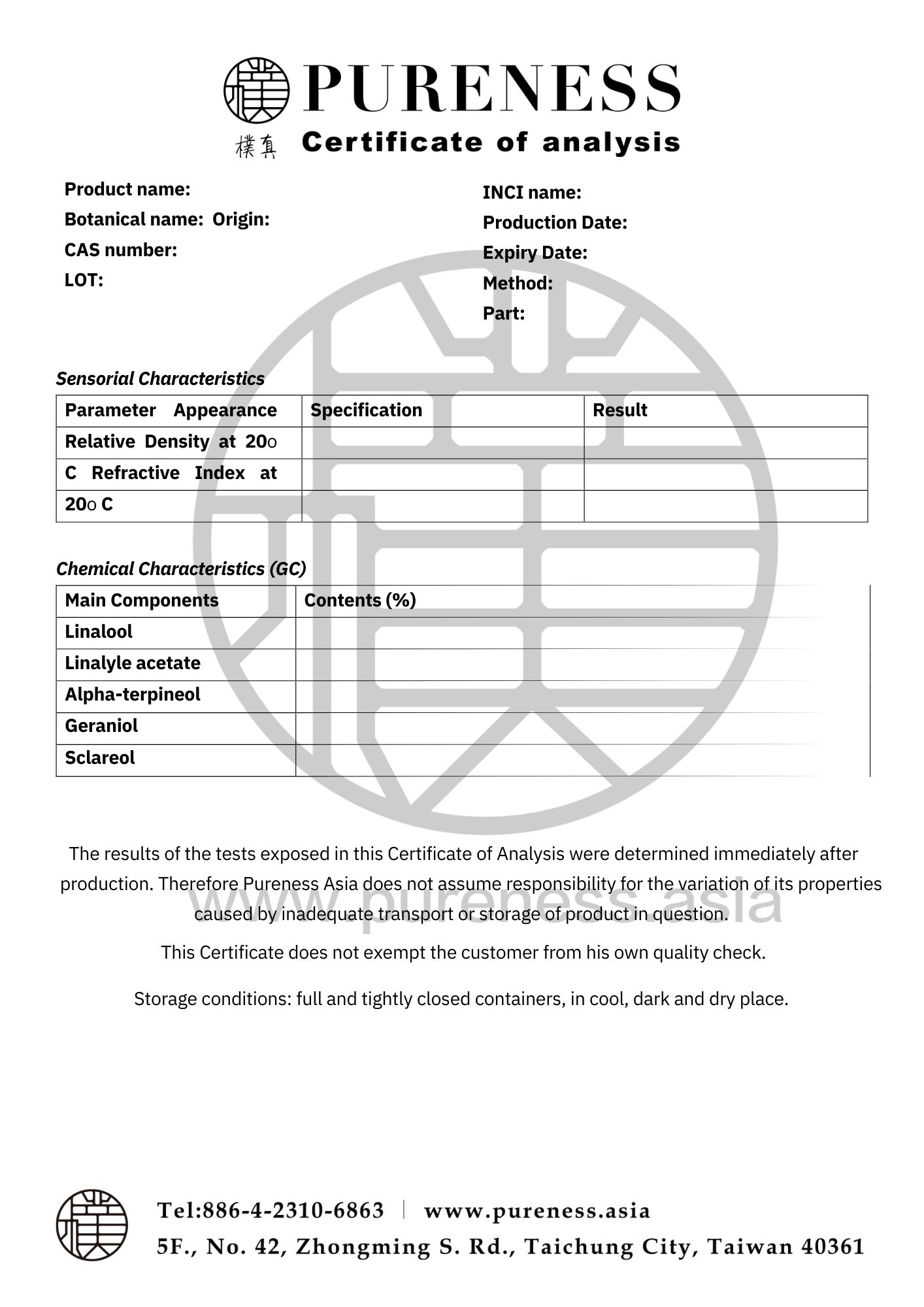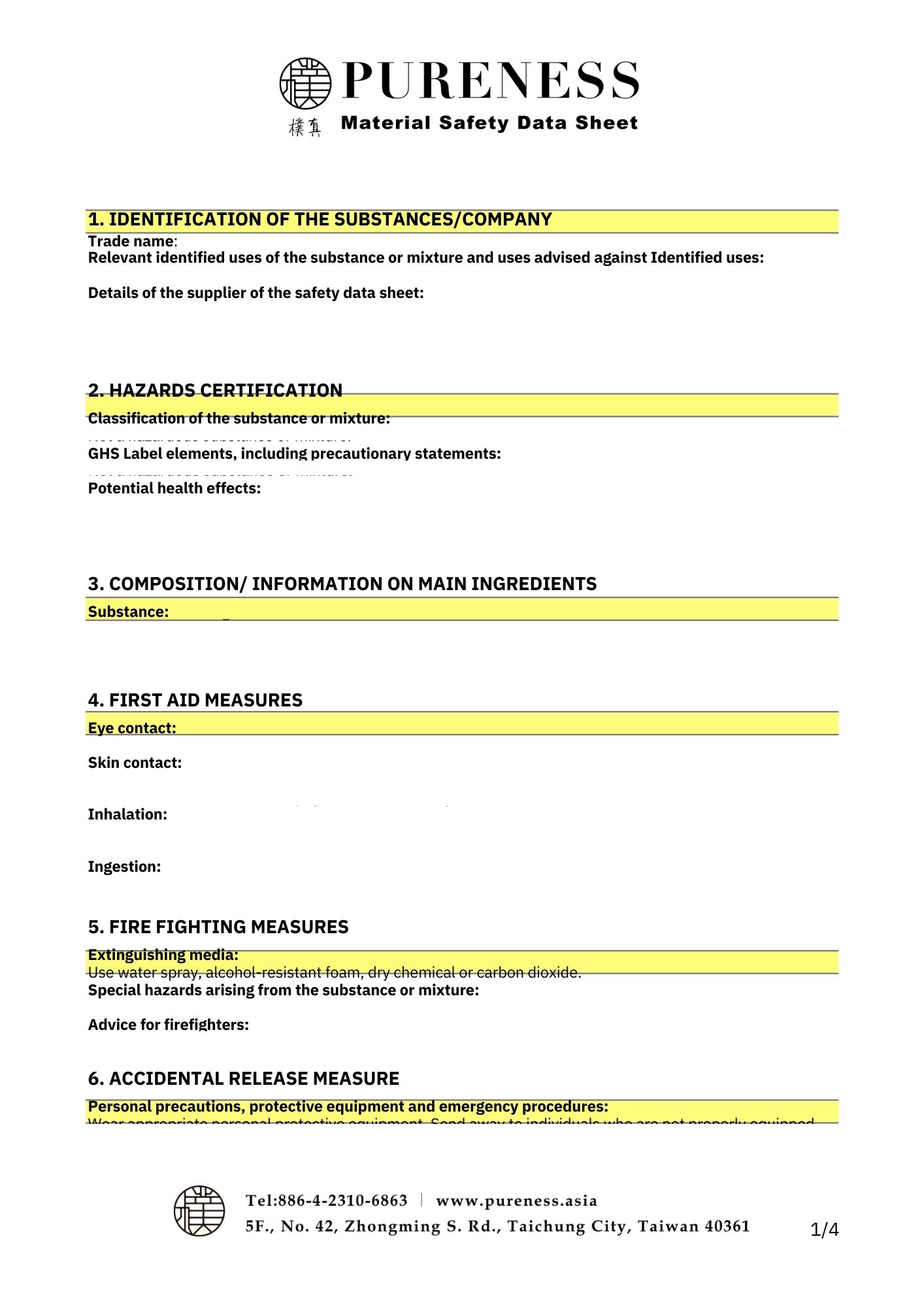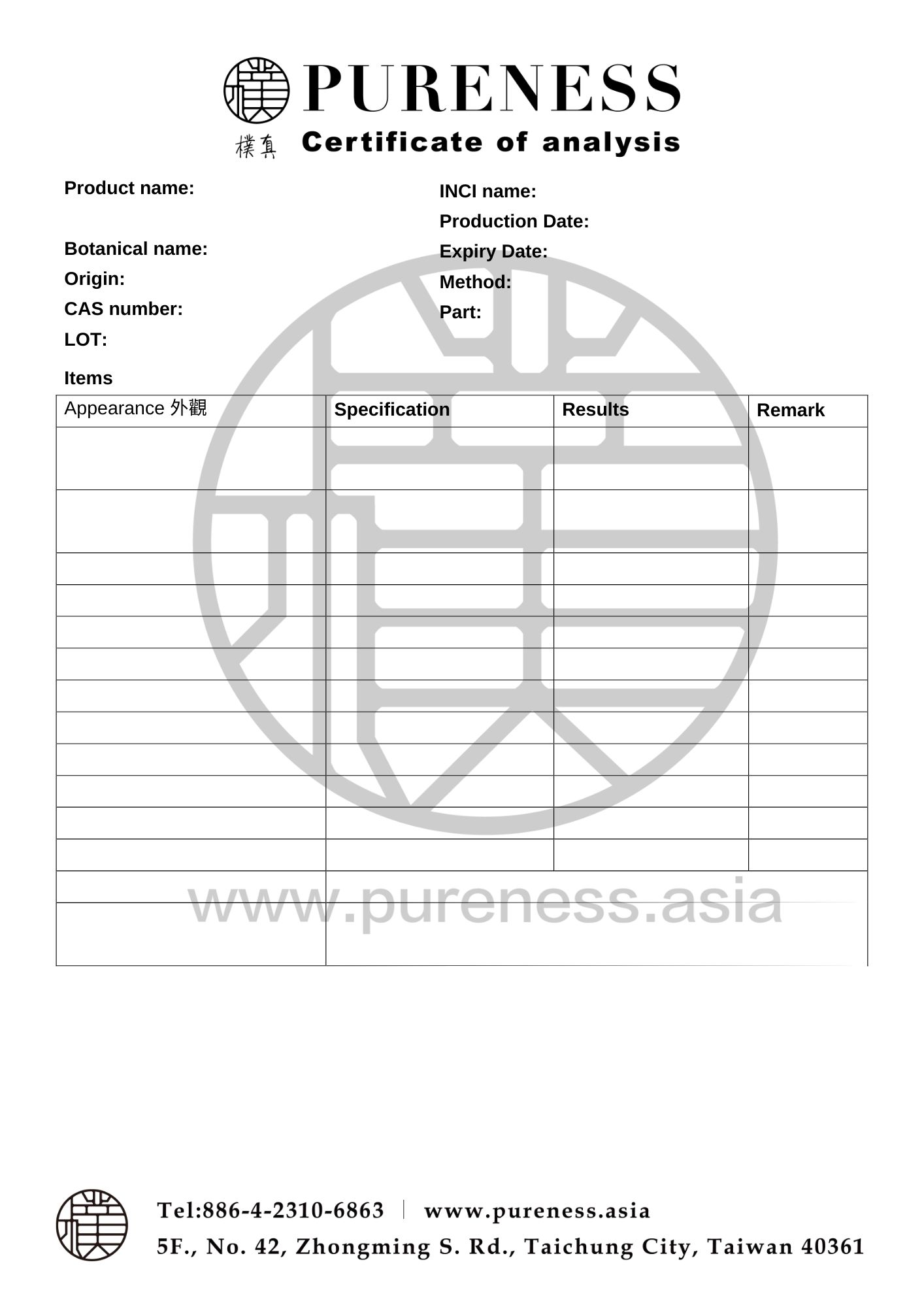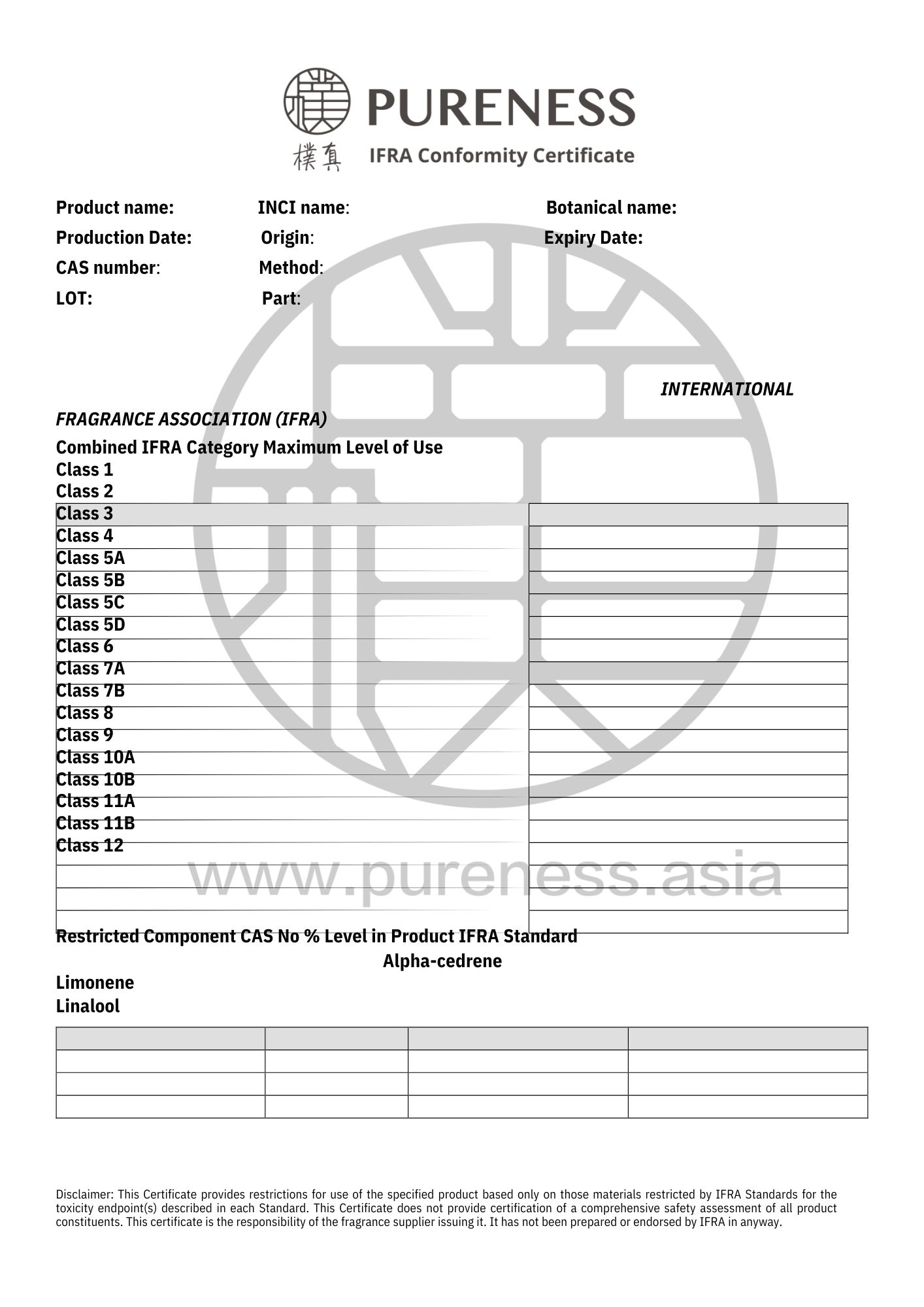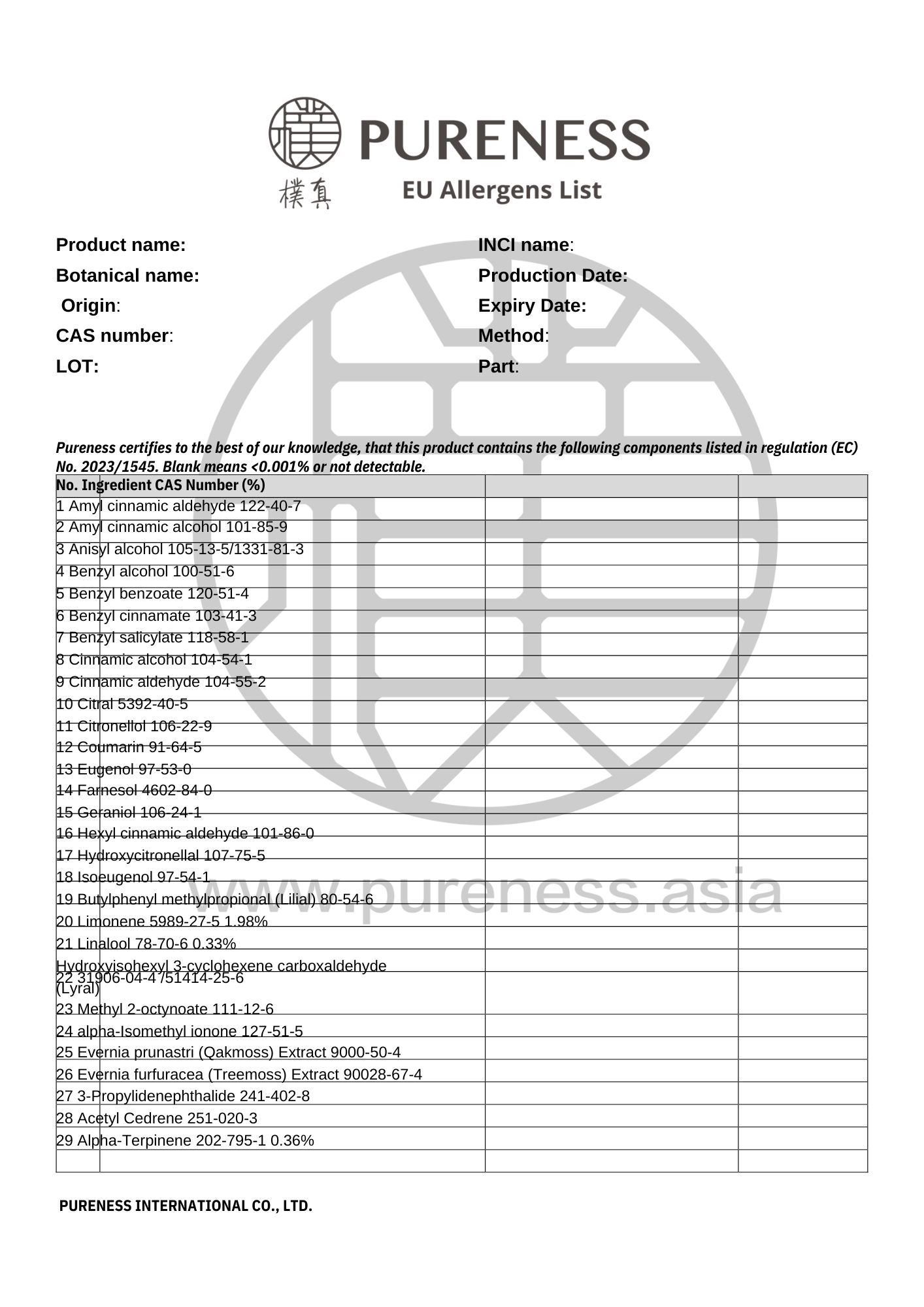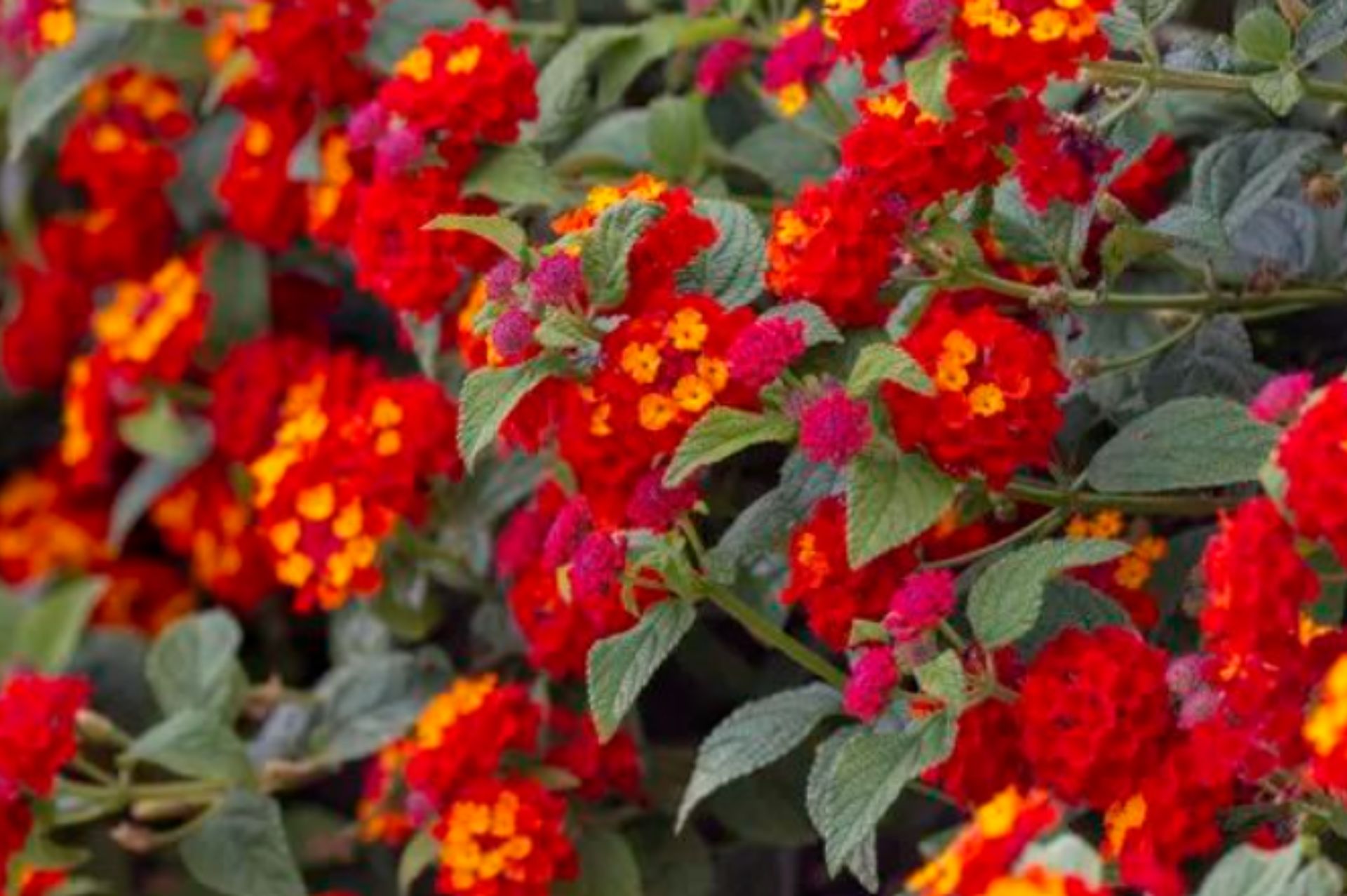
Lantana
Scientific name|Lantana camara
Origin|Madagaskar
Classification|Flower series
Specifications|500g-25kg Please contact sales for details
Extraction part|Flower
Extraction method | Distillation
Plant family|Verbenaceae
Aroma|rich narcissus fragrance with a sweet undertone
▎Essential Oil Introduction
Traditional herbal medicine mostly focuses on the leaves' properties. Lantana is described as "bitter, cold, and toxic," referring to its ketone content. The branches, leaves, and unripe fruits are toxic and can cause chronic liver poisoning if ingested, leading to symptoms such as fever, weakness, vomiting, diarrhea, unsteady gait, rapid breathing, coma, and jaundice. However, its essential oil is non-toxic.
While Lantana is abundant throughout Taiwan, the essential oil is extracted from the leaves of Lantana grown in faraway Madagascar. The oil has a warm, intense aroma, with a high proportion of artemisia ketone.
▎Component Analysis
|Main component: Sesquiterpene ketones, sesquiterpene
The main components are sesquiterpene ketones and sesquiterpenes, including artermisia pallens, lantadene, lantanolic acid, and lanatic acid. Additionally, there are trace amounts of humulene, β-caryophyllene, γ-terpinene, α-pinene, and p-cymene.
|Research Validation
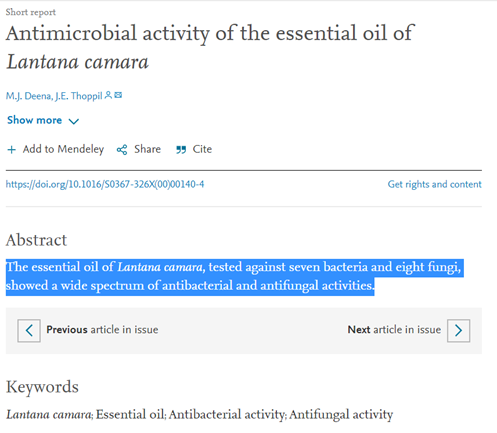
▸ Research has shown that Lantana essential oil has antimicrobial properties.
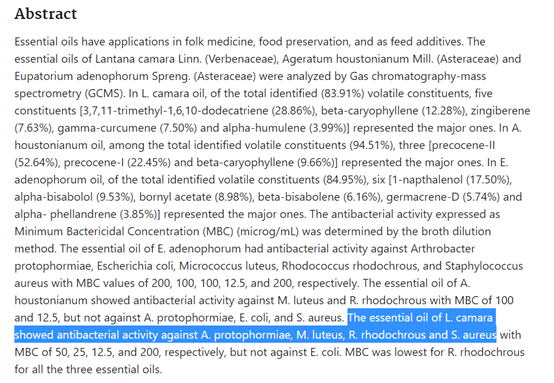
▸ Research has explored the use of Lantana essential oil for food preservation.
|Raw Material Certifications
To obtain relevant certification information, please contact us on WhatsApp.
▎References
- Frank C Mng'ong'o et al. Repellent plants provide affordable natural screening to prevent mosquito house entry in tropical rural settings-results from a pilot efficacy study. PLoS One. 2011;6(10):e25927.
- Larvicidal activity of two Algerian Verbenaceae essential oils against Culex pipiens. Vet Parasitol. 2011 Sep 27;181(2-4):370-3.
- Adriana R. Campos, Sidney G. Lima, José Galberto M. Costa. Chemical composition and resistance-modifying effect of the essential oil of Lantana camara Linn. Pharmacogn Mag. 2010 Apr;6(22):79-82.
- Adulticidal activity of essential oil of Lantana camara leaves against mosquitoes. Indian J Med Res. 2010 Mar;131:434-9.
- Cytotoxic evaluation of semisynthetic ester and amide derivatives of oleanolic acid. Nat Prod Commun. 2010 Oct;5(10):1567-70.
- Cytotoxic evaluation of semisynthetic ester and amide derivatives of oleanolic acid. Nat Prod Commun. 2010 Oct;5(10):1567-70.
- B. Sharma* and P. Kumar. Bioefficacy of Lantana camara L. against Some Human Pathogens. Indian J Pharm Sci. 2009 Sep;71(5):589-93.
- The anti-mycobacterial activity of Lantana camara a plant traditionally used to treat symptoms of tuberculosis in South-western Uganda. Afr Health Sci. 2009 Mar;9(1):40-5.
- Cytotoxic pentacyclic triterpenoids from Combretum sundaicum and Lantana camara as inhibitors of Bcl-xL/BakBH3 domain peptide interaction. J Nat Prod. 2009 Jul;72(7):1314-20.
- Antimycobacterial activity of flavonoids from Lantana camara Linn. Nat Prod Res. 2008 Apr 15;22(6):467-70.
- Lantadenes and their esters as potential antitumor agents. J Nat Prod. 2008 Jul;71(7):1222-7.
- Antimicrobial activity of some Indian medicinal plants. Afr J Tradit Complement Altern Med. 2007 Feb 16;4(3):313-8.
- Synthesis, cytotoxicity, and antitumor activity of lantadene-A congeners. Chem Biodivers. 2007 May;4(5):932-9.
- Search for antibacterial and antifungal agents from selected Indian medicinal plants. J Ethnopharmacol. 2006 Sep 19;107(2):182-8.
- Evaluation of the antibacterial activity of Ventilago madraspatana Gaertn., Rubia cordifolia Linn. and Lantana camara Linn.: isolation of emodin and physcion as active antibacterial agents. Phytother Res. 2005 Oct;19(10):888-94.
- Effects of Lantana camara (Verbenaceae) on general reproductive performance and teratology in rats. Toxicon. 2005 Mar 15;45(4):459-66.
- Effects of Lantana camara (Verbenaceae) on rat fertility. Vet Hum Toxicol. 2003 Feb;45(1):20-3.
- M J Deena , J E Thoppil. Antimicrobial activity of the essential oil of Lantana camara. Fitoterapia. 2000 Aug;71(4):453-5.
- Juanita .Barre et al. A bioactive triterpene from Lantana camara. Phytochemistry. 1997 May;45(2):321-4.
- Inhibitory effects of lantadenes and related triterpenoids on Epstein-Barr virus activation. Planta Med. 1995 Dec;61(6):558-9.
|Some images sourced from the internet. Contact for copyright removal|
